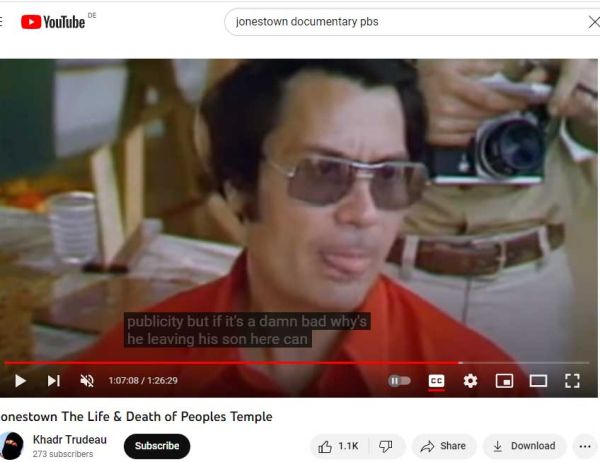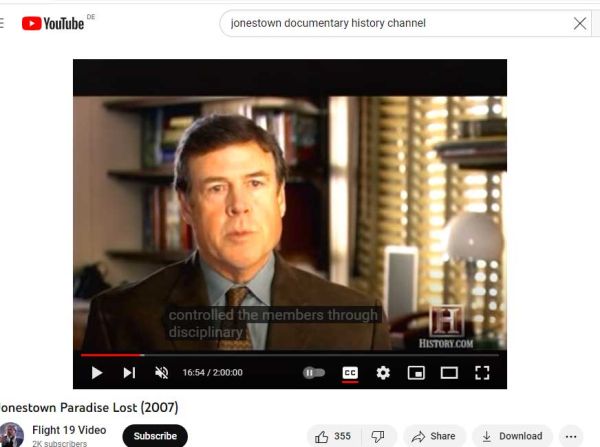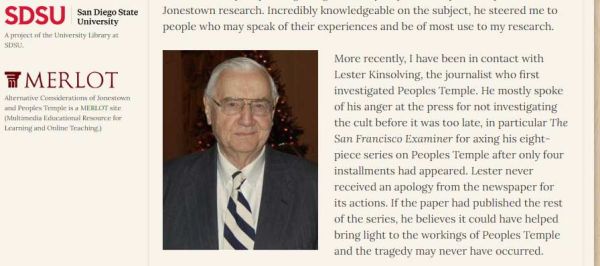The Politicians Failed Us on Jonestown
The Politicians Failed us on Jonestown
The history of Jim Jones, his Peoples Temple, and the settlement he started in Jonestown, Guyana, has interested me for some time. It happened in 1978, just a few years after I had finished college. At the time, I did not have a TV set, nor did I read any account of it in the newspapers. The Jonestown story came and went, and I mostly forgot about it. Work responsibilities in my first job and building new relationships were all I could handle.
In 2008, two cable networks released documentaries of the event. The Public Broadcasting System (PBS) titled its documentary Jonestown: the Life and Death of Peoples Temple, and the History Channel broadcast its documentary with the title Jonestown: Paradise Lost. The subject has captivated me ever since.
The Peoples Temple started out as a left-wing or socialist church congregation in Indiana, then moved to California and degenerated into a cult led by its paranoid, volatile, and dictatorial Reverend Jim Jones. In addition to church services, the Temple ran a retirement home, a home for troubled youth, and other activities.
In the late-70s, facing media scrutiny for his savage punishments of Temple members, his use of armed body-guards, and the probable misuse of church-member finances, Jones fled to Guyana in South America with his followers, to create a commune in the jungle wilds, named "Jonestown" for him.
Both documentaries featured interviews with Tim Reiterman, whose 600-page history of Jonestown, titled Raven, appeared in bookstores in 1982 and has remained in print ever since. My copy dates from 2008, to take advantage of the renewed interest in Jonestown, during the 40th anniversary of the Jonestown mass suicide and the documentaries.
The documentaries mostly skimmed over Jim Jones's efforts to cultivate political relationships in San Francisco, the location of Peoples Temple before it moved to Guyana. Reiterman describes these relationships in some detail and said that they proved vital in maintaining Jones's reputation as media scrutiny intensified and exposed more of his character and the charlatan quality of his operations.
The media scrutiny came into play in the early-70s through investigative reporting by news outlets in Indianapolis, San Francisco, and the nationally-known syndicate journalist Lester Kinsolving, who had already proven himself as a political and religious gadfly to people in power. Kinsolving's cameraman took note of the security guards and their firearms, and decided that Jones did not have a church but an armed compound.
Kinsolving wrote in his column that Jones signed church-members up for welfare, then had them turn over their checks to him. To stop him, Jones sent 150 church-members to the newspaper that printed the article to protest. He also started a mass letter-writing campaign that intimidated the newspaper into cancelling the last three of Kinsolving's articles.
The next journalist to write against Jones was John Todd. Jones took a more direct approach, drove Todd to San Francisco's deserted docks with three of his thugs and basically shook him down: "Why do you want to attack me?" Jones demanded to know. Jones's personal attorney scolded him, "You're destroying a good man. It's morally reprehensible." Church-members telephoned Todd at his home to harass him. So Todd backed off, as well.
Then, in 1977, the New West magazine gave its reporter Marshall Kilduff permission to go after Jones. Kilduff and Reiterman lined up meetings with defectors from Peoples Temple. Their allegations went beyond anything the reporters had heard: regular beatings of members, Jones's routine extra-marital affairs with church-members--male and female--and increasing drug use. The defectors described life in the Temple as a "mixture of Spartan regimentation, fear, and self-imposed humiliation."
The above photo shows Jim Jones with State Assemblyman Willie Brown and San Francisco mayor George Moscone.
Rather than take the side of the defectors and the efforts of the media to expose Jones, the politicians rallied to Jones's side and criticized the whistleblowers: Willie Brown, County Supervisor Harvey Milk, Lieutenant Governor Mervyn Dymally, and others had too much invested in Jones's cooperation. They never did bother to check up on the allegations that Kilduff and the defectors made about him. Even after Jones coaxed his followers into committing suicide or murdering them outright, the San Francisco politicians stood by the dead Jones. Thanks to the Democrat Party machine, they never did face any serious accountability problems.




